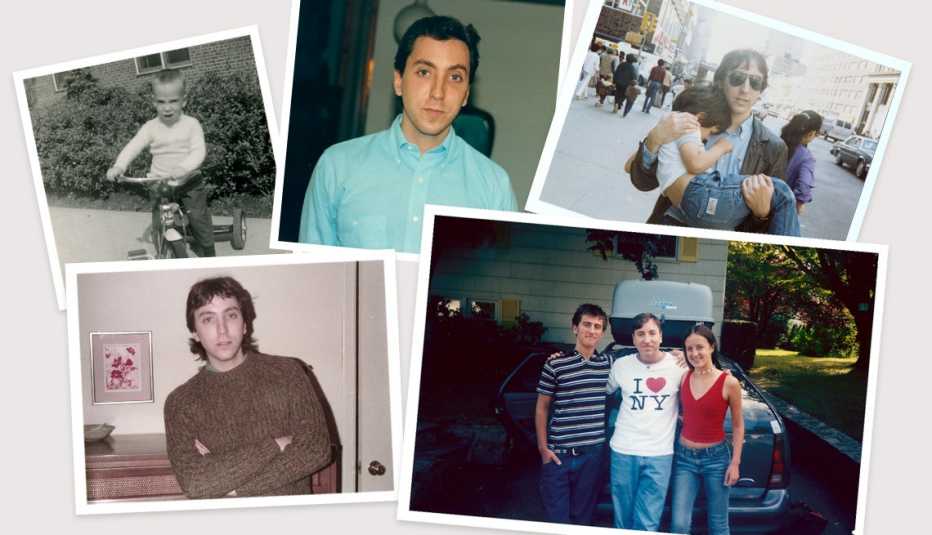Staying Fit


With a smattering of stars outside my window, I slip into bed, my dog at my left side, a radio to my right whispering “Moondance.” I review the previous 24 hours. No harrowing bouts of depression so profound it hurts to speak. No episodes of hypomania where I jabber on as fast and shrill as a squirrel on Adderall. No thoughts of suicide. Instead, a full appreciation of my morning coffee, the blue Pacific sky, my afternoon walk to the corner bodega. In other words, a good day. Which seems like a religious miracle considering the countless crippling ones that led me here. Enough of those days and you are so worn down, you think eventually you’ll be erased altogether. Such is the excellent work that bipolar disorder does.
Since I was a teen, I had profound mood swings. I’d have highs where my brain sparkled, full of ideas to write, to film, to play guitar five hours a day. Followed by a darkness so extensive, I couldn’t find the person who performed these tasks. This continued until someone diagnosed these drastic shifts — after I turned 61.


AARP Membership— $12 for your first year when you sign up for Automatic Renewal
Get instant access to members-only products and hundreds of discounts, a free second membership, and a subscription to AARP the Magazine.
An elusive answer
I don’t know why this went on so long, my dance with a conga line of mental health professionals. I talked about my childhood. Discussed my dreams. Reexperienced the pain of childbirth. Did my best to describe my panic attacks. In return I was given Valium, various forms of Benzedrine, crude early antidepressants. None of which touched the illness. Trudging on, I managed to thrive at college, grad school and various magazine jobs. While a little voice within whispered, Fix me.
Somehow I survived until I chanced upon my salvation. Linus Abrams, a private-practice psychiatrist, didn’t stick to the boilerplate process, then hand out platitudes and Prozac. He asked me questions no one ever had before. Did I have sudden, overwhelming desires for activity, for creativity, for sex? Did I call friends at all hours, desperate to share some amazing idea? Did I have long periods when I couldn’t function and have thoughts of killing myself? Yes to all.
The start to relief
So, in something like an hour, 45 years of hell were nosed up into the light. “This doesn’t sound like ordinary depression at all,” said the good doctor. “I think you have bipolar disorder — bipolar II, actually. I’m going to prescribe something new for you. I think it will help.” I flashed back on all the years I’d been pulling my burden behind me, like some black rotting animal. The hours spent paralyzed in bed, my notebook uselessly in reach. The relationships ruined when impatient women thought I was “too moody.” Pictures of these years ran through me as fast as a movie trailer. And I began to cry.
What Dr. Abrams prescribed for me was a drug called lamotrigine. This medication, first created to stop seizures, was found, accidentally, to wrestle hypomania and its vicious counterpart, melancholia, to the ground. What to others is just a white triangle, scored down the middle, to me is God in a vial.
According to the health and wellness website Sharecare.com, bipolar disorder is hard to diagnose because “there is no simple blood test or X-ray that indicates definitively one way or another.” Yet, even with that challenge, approximately 6 million American adults struggle with the condition.
They are no farther away than my closest friends.
Similar stories
Kathy (not her real name — it was changed at her request) didn’t get diagnosed and treated until her mid-40s. “I managed to evade the disease, or cover it up, until my mid-30s,” she said, “which was when I started to really feel it. First I would go into high manic mode. I’d work a ridiculous number of hours every day. I went on wild shopping sprees. The lows were terrible bouts of irritability and deathly depression. I would snap at people for no reason.”


































































More on Health
New Report Finds Links Between 'Mental Well-Being' and Brain Health
Positivity and optimism might protect against cognitive decline, reports AARP's Global Council on Brain Health6 Things to Know About Bipolar Disorder
Millions of adults in the U.S. have this mental illness, but it's often misunderstood